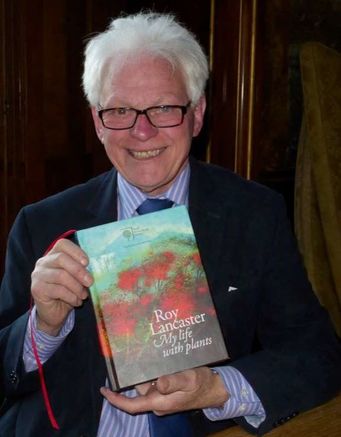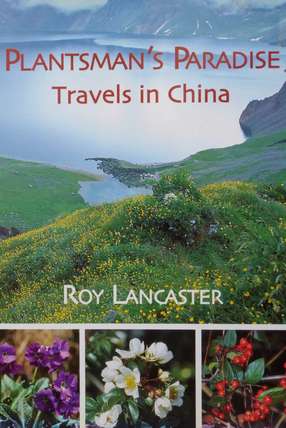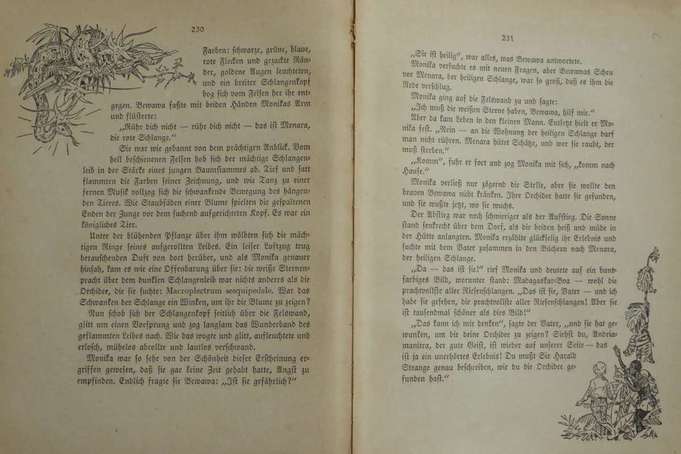It might have been the enthusiasm for each plant with which it was written, it might have been the excitement of learning about new plants. But there were so very many fabulous plants new to me. Looking back, I guess the decisive thing about this column was that its author was described as a "plant hunter” if I remember correctly. Until then I had believed the days of plant hunters were long over. Plants had been discovered, named and introduced from all parts of the world and that was that. Plant hunting as a career was extinct. Apparently not so. How incredibly exciting!
It is, in one sentence, exactly what it says on the tin. But it is much more. Since Roy Lancaster over the course of his career has met so many, if not most, of its influential figures, this book is also a snapshot of the world of British horticulture during the past half century. Not a concise history of it, but a snapshot of important players and the network existing between them, as well as a wealth of information of how things were done. Historians will love it one day as it is such a rich source to mine.
Starting with his childhood, he devotes roughly a chapter each to the various stages in his career. From apprenticeship with the Parks Department in his native Bolton to National Service in Malaya; from studies at the Cambridge University Botanic Gardens to his eighteen years at the world famous Hillier nursery and arboretum; from first going freelance to getting involved with the BBC. Naturally, there are also chapters about his travels as a plant hunter and finally about the rare plants he grows in his own garden.
I was lucky enough to hear Roy Lancaster talk about his life a year ago at Kew. If I feel one tiny disappointment about the book, it’s that his lively voice and facial expressions, the beaming smile and twinkle in the eye, the sheer exuberance which captured his audience does not so readily translate onto the page. You can't blame the author for that though – a written account of course is a different thing to a live talk.
Still, Lancaster’s narrative style is much like that of a grandfather telling stories about his youth: full of detail which along the way enlightens about a society and way of life the younger generations never got to know for themselves. A grandfather whom you really enjoy listening to because his tales are studded with amusing anecdotes throughout. Many, of course, are plant related – but by no means all as when he talks about his early love of steam trains.
Anecdotes and listings of plants spotted all over the world
Something that struck me as perhaps typically male is his seemingly life-long enthusiasm for using and making lists, finding and ticking off plants in the wild. A habit like trainspotting. Myself, I dearly love wild plants and will always keep an eye open and of course enjoy finding plants that are rare. But I would never dream of going somewhere with a local flora in hand, seeing whether I could find them all, too, or travel to a particular location to track down one specific species. But then I’m not a botanist.
And yes, you probably have to be a bit of a plant nut to fully enjoy the book, at least it helps. Still, even those who aren’t will find plenty of interest - and you could always skim the passages describing which plants Lancaster spied when and where. Anyway, what else would you expect from one of the most eminent plantspeople of our age?
Snippets of information galore: Alternative tobacco, anyone?
What really surprised me though was how committed and confident he must have been from early on in order to write letters and send specimens of plants he had collected to various experts and institutions. Whether corresponding with Kew as an apprentice or with the Singapore Botanical Gardens whilst being stationed on Malaya during his army years: I don’t think I would have had the courage to do so. Or indeed have thought of it and taken the initiative, especially at such a relatively young age.
Then in her late teens, she’d taken to smoking a pipe stuffed with dried peppermint leaves. One day, with no-one else around, she offer me a puff. Naturally, I had to accept. For one thing, she had always maintained that she’d never smoke cigarettes, so this pipe couldn’t be bad - could it?. More importantly still, if your older sibling offers you something you aren’t supposed to do or have yet, of course you’ll accept! Well. Feeling very grown and important, I inhaled or at least sucked in the smoke, then… Suffice to say I ran to the bathroom, drank lots of water afterwards and had a cough for several days. And I never felt the desire to smoke anything ever again.
For plant lovers and gardeners everywhere
And anyone who’s ever attempted the same will readily understand his delight to see seed brought back from afar grow and get established, perhaps even flower, at home. Mine aren’t new or even rare finds, but that doesn’t mean they give me any less pleasure: the Kowhai (Sophora tetraptera) and Southern rata (Metrosideros umbellata) from New Zealand, the Swiss cheese plants (Monstera deliciosa) from fruit bought at a Madeira market (which eventually, due to their size, we had to give away), the Bomarea (caldasii, I believe) from a trackside near the El Altar mountains in Ecuador and others like them.
To sum up then: Roy Lancaster’s autobiography is a fascinating read. Most people who are into plants will not only find much to learn but have memories of their own triggered. Having gone through a horticultural apprenticeship myself years ago, mine mainly bubbled up whilst reading the account of his early horticultural education. The mention of countless clay pots to be cleaned with cold water during his years at Bolton, for instance, had me shivering again as I remembered why to this day I have a hearty dislike for heathers. But that’s a story for some other blogpost perhaps…
Gone native: Madeira aside from its gardens and parks
Camping in the Stockholm archipelago



 RSS Feed
RSS Feed